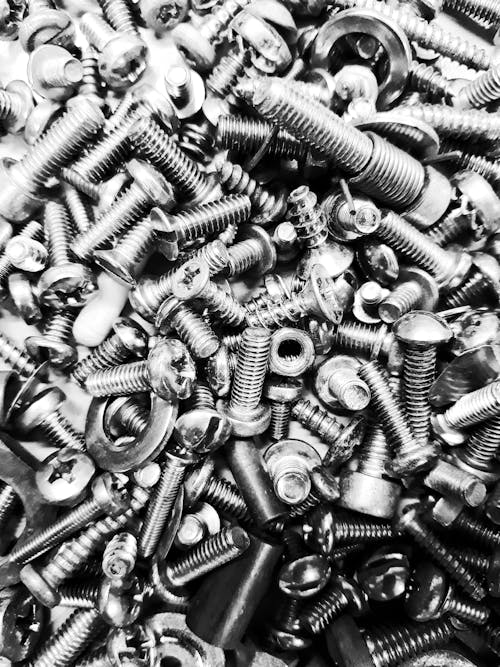Introduction:
Fasteners are ubiquitous in our everyday lives, holding together everything from bridges to smartphones. While they may seem simple, the science behind fasteners is anything but. In this blog, we’ll delve into the physics principles that govern the effectiveness of fasteners, exploring concepts like friction, tension, and torque. Additionally, we’ll uncover how engineers leverage these principles to optimize fastener designs for maximum strength and reliability.

1.Understanding Friction:
- Exploring the role of surface roughness and lubricants in reducing friction and improving fastener performance.
- Discussing the phenomenon of static and kinetic friction and how it influences the initial tightening and subsequent behavior of fasteners.
- Highlighting real-world examples where friction played a decisive role in fastener failure or success, such as in automotive or aerospace applications.
2. Tension: The Key to Secure Connections:
- Illustrating the importance of proper preload in achieving uniform tension distribution and minimizing the risk of joint failure.
- Explaining how factors like bolt stretch and elastic deformation contribute to maintaining tension under varying loads and thermal conditions.
- Showcasing innovative tensioning methods, such as hydraulic tensioning or ultrasonic measurement, used in critical applications like bridge construction or wind turbine assembly.
3. Torque: The Measure of Twisting Force:
- Discussing the relationship between torque, bolt preload, and the torque-angle curve, and how it varies with different fastener materials and lubrication conditions.
- Exploring the challenges of achieving consistent torque in large-scale assemblies or in constrained spaces and the strategies engineers employ to overcome them.
- Examining advancements in torque measurement technology, such as digital torque wrenches or torque sensors, and their impact on fastener tightening accuracy.
4. Optimizing Fastener Designs for Maximum Strength:
- Introducing advanced fastener geometries like flanged bolts, self-locking threads, or serrated washers, designed to enhance load distribution and resistance to loosening.
- Discussing the trade-offs between thread engagement length, thread pitch, and fastener diameter in balancing strength, weight, and assembly complexity.
- Highlighting the role of finite element analysis (FEA) and computer-aided design (CAD) in simulating and optimizing fastener performance before prototyping and testing.
5. Reliability in Real-World Applications:
- Exploring the challenges of fastener degradation in corrosive environments and the development of corrosion-resistant coatings or materials to mitigate these effects.
- Showcasing case studies of fastener failure analysis in industries such as oil and gas, where catastrophic consequences underscore the importance of reliability testing.
- Discussing the role of standardization bodies like ASTM or ISO in establishing testing protocols and performance criteria for fasteners used in safety-critical applications.
6. Dynamic Loading and Fatigue:
- Discussing the effects of cyclic loading and vibration on fastener integrity, leading to fatigue failure over time.
- Exploring fatigue life prediction models and fatigue testing methods used to evaluate fastener performance in dynamic environments.
- Highlighting strategies such as lock-wiring, thread-locking adhesives, or elastomeric inserts to mitigate fatigue-induced loosening and failure.
7. Temperature Effects on Fasteners:
- Investigating the thermal expansion and contraction of fastener materials and how it affects preload and clamping force in temperature-varying environments.
- Discussing thermal cycling tests and thermal stress analysis to assess the long-term stability of fasteners in applications exposed to extreme temperatures.
- Exploring the use of high-temperature alloys, ceramic coatings, or thermal barrier coatings to enhance fastener performance in elevated temperature environments.
8. Environmental Factors and Contaminants:
- Examining the impact of environmental factors such as humidity, moisture, and chemical exposure on fastener corrosion and degradation.
- Discussing strategies for preventing galvanic corrosion, such as material compatibility selection, sacrificial anode installation, or cathodic protection systems.
- Highlighting advancements in corrosion-resistant coatings, such as zinc-nickel plating or organic polymer coatings, to extend fastener lifespan in harsh environments.
9. Assembly Techniques and Fastening Tools:
- Exploring manual vs. automated fastening techniques and the advantages of each in terms of speed, accuracy, and repeatability.
- Discussing the role of specialized fastening tools such as torque wrenches, impact drivers, or pneumatic riveters in achieving precise and consistent fastener installation.
- Showcasing innovative assembly technologies like ultrasonic welding, laser bonding, or induction heating for joining materials without traditional fasteners.
10. Sustainability and Recyclability:
- Examining the environmental impact of fastener production, including raw material extraction, manufacturing processes, and end-of-life disposal.
- Discussing sustainable fastener alternatives such as biodegradable polymers, recycled metals, or bio-based composites, and their potential to reduce environmental footprint.
- Highlighting circular economy initiatives and product stewardship programs aimed at promoting responsible fastener usage, recycling, and waste reduction throughout the product lifecycle.
Conclusion:
The intricate dance of physics principles governing fasteners underscores their vital role in our interconnected world. From the humble bolt to sophisticated aerospace-grade rivets, each fastener is a testament to the meticulous engineering required to ensure secure connections in diverse applications.
By understanding the nuances of friction, tension, and torque, engineers can craft fastener solutions that withstand the test of time, resisting fatigue, corrosion, and dynamic forces. From optimizing designs for maximum strength to testing reliability in real-world conditions, every aspect of fastener engineering contributes to the seamless functioning of countless structures, machines, and devices.
As we look to the future, sustainability emerges as a paramount consideration, driving innovation towards eco-friendly materials and circular economy practices. By embracing sustainable fastening solutions, we not only enhance the durability and performance of our creations but also safeguard the environment for generations to come.
In the end, the science behind fasteners is a testament to human ingenuity and the relentless pursuit of excellence. Whether holding together the towering skyscrapers of our cities or the intricate mechanisms of our gadgets, fasteners serve as the unassuming yet indispensable linchpins of modern society, ensuring that our world remains firmly connected in more ways than one.


